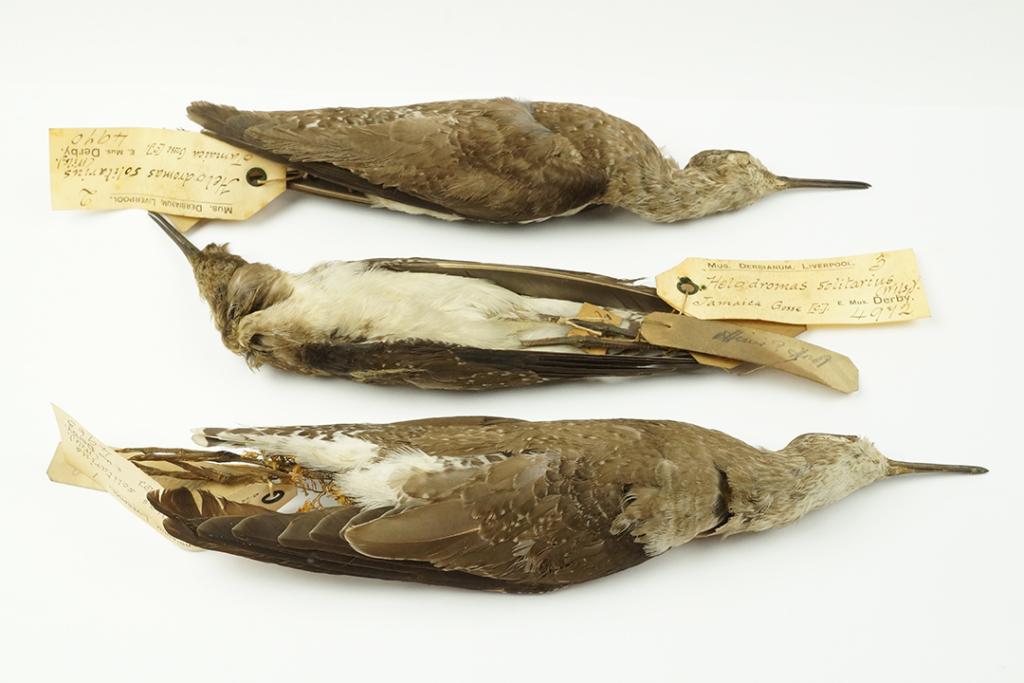Samuel Campbell and 'The Birds of Jamaica'
Campbell's significant contribution to European knowledge of the biodiversity of Jamaica.

It was 1 January 1845 and Samuel Campbell, a young Black Jamaican, started work as a natural history collector on a salary of $4 per month. The job involved stalking and shooting birds and mammals, preserving the skins, and gathering any other interesting plants and animals. It would last for 18 months. Campbell’s local knowledge helped make the zoological and botanical material assembled by him and his employer, English naturalist Philip Henry Gosse, a major contribution to European knowledge of the biodiversity of Jamaica. Together they increased the number of bird species known to inhabit the island to around 200. Around 300 are known today.
Campbell and Gosse based their field collecting out of the Bluefields estate in Westmoreland. The semi-abandoned estate was occupied by Moravian missionaries and at the time a centre of missionary activity. It provided an ideal location from which to explore the different habitats found in the west of the island.
On his return to England Gosse used the assembled specimens to write The Birds of Jamaica, which was published in 1847. The book features anecdotes and interesting ecological observations shared by Campbell over many hours together in the field. Several of the birds were purchased from Gosse’s dealer, Hugh Cuming, by the 13th Earl of Derby in June 1846. Derby in turn bequeathed his substantial natural history collection to the people of Liverpool in 1851, founding World Museum. There are 70 birds collected by Campbell and Gosse in the vertebrate zoology collection at World Museum. A few of the specimens from the collection are highlighted below:
The Belted Kingfisher 'Megaceryle alcyon' is a common bird in Jamaica but due to a natural wariness it took some stealth for Campbell to secure specimens. Gosse recalled Campbell concealing himself in a dense prickly bush in order to get a successful shot.

The White-crowned Pigeon 'Patagioenas leucocephala' is a near threatened species but was common in Jamaica in the 1840s. Campbell had seen as many as 30 birds feeding on a single tree at the start of the fruiting season.

Gosse listed three ‘petcharies’ in Jamaica, the Grey Petchary, Common Petchary and Red Petchary, and used the alternative name ‘Loggerhead’ for the latter. However, Gosse’s Grey Petchary is now known as Gray Kingbird 'Tyrannus dominicensis', his Red Petchary as Great Crested Flycatcher 'Myiarchus crinitus', and his Common Petchary as Loggerhead Kingbird 'Tyrannus caudifasciatus'. Campbell had found a Great Crested Flycatcher nest, with four chicks, at the bottom of a hollow stump in the mountains. We don’t have those specimens at World Museum but we do have two Loggerhead Kingbirds.

The Smooth-billed Ani 'Crotophaga ani' was known by the collectors as the Savanna Blackbird. The scientific name ‘crotophaga’ from the Greek ‘tick-eater’, was presumed by some to be a misnomer, but known by locals to be well-deserved. Campbell shared with Goss that he had often seen the birds clinging to cow’s tails and picking insects from them, ‘as far down as the terminal tuft’.

The Northern Potoo 'Nyctibius jamaicensis' is a creature of habit. Gosse recounted how a large Potoo liked to sit on a post near the Bluefields tavern. Campbell’s first attempt to shoot this bird missed and only blew out a few feathers. Nevertheless, the bird returned to the post the next sunset; it didn’t manage another lucky escape. A Northern Potoo collected by Campbell and Gosse was figured in the accompanying Illustrations of the Birds of Jamaica, published in 1849.

The labels attached to these specimens only list Gosse as the collector and this was transcribed into the records in our collection database Mimsy. We have now added Campbell as the recorded collector of these specimens alongside Gosse.

Lead image: Solitary Sandpipers Tringa solitaria collected by Samuel Campbell and Philip Henry Gosse in Jamaica in 1845-1846 © National Museums Liverpool (World Museum: NML-VZ D4970 (S), NML-VZ D4972 (S), NML-VZ D4963 (S)) / JJ. Wilson.
